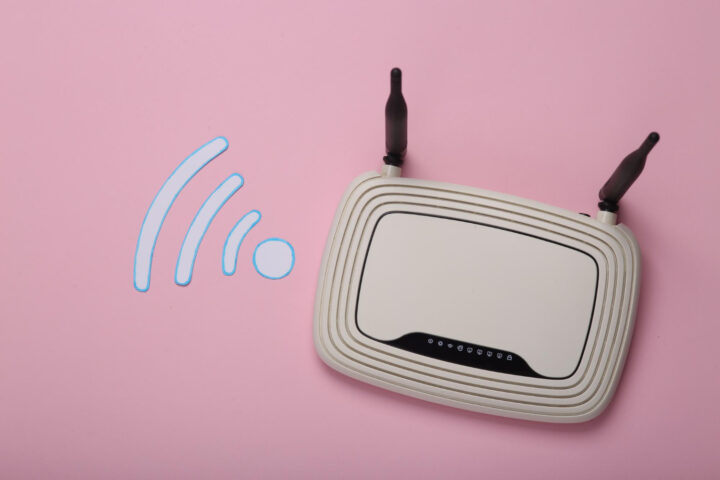Guesswork makes home internet feel random; quiet measurements make it predictable. The quickest path to smoother video calls, fairer games, and snappier pages isn’t a new router—it’s a simple routine that shows exactly where performance slips. Start by learning what your line can really do over a wire. Then walk the house and write down the same few numbers in every room so you can see patterns instead of hunches. With that map, you’ll adjust placement and channels once, set gentle traffic rules, and stop touching settings for months. The point isn’t to become your own ISP; it’s to isolate problems so each fix is surgical. When delay, loss, and radio health are honest in your notes, your devices stop fighting for air time, handoffs feel invisible, and streaming no longer falls apart when someone uploads photos. A calm test routine turns “the internet is weird again” into “we know why and what to do.”
Establish a wired truth so Wi-Fi doesn’t take the blame

Before you tune anything over the air, prove the raw connection. Plug a laptop into your router or gateway with Ethernet, turn off VPNs and heavy syncs, and take three readings: a couple of speed tests for rough throughput, a burst of pings to the router for local latency and loss, and a second burst to your provider’s first hop for upstream stability. The router should answer in low single-digit milliseconds with essentially zero loss. The provider hop will be a touch higher but steady; wild swings or packet loss here point to a service issue you can’t solve with antenna gymnastics. Keep this page of numbers. It’s your truth meter—any room test that looks worse tells you exactly how much the air and walls are costing you. If uploads spike latency to triple digits while a file transfer runs, you’ve discovered bufferbloat; note it and move on. Everything else you test will be compared to this wired baseline so you don’t chase ghosts inside the house for problems that live outside it.
Walk the house once and record the same three numbers everywhere
Now repeat in the real places you use devices. Stand at the sofa, desk, kitchen counter, and bed. On the same laptop or phone, record latency and loss to your router over a 60–100 ping burst, then jot a quick download figure when the house is idle. Add the signal reading your device shows, because bars lie; the number does not. As a friendly rule of thumb, round-trip to the router under about 10 ms feels snappy, and stable under 20 ms is fine; sustained jitter or spikes mean your radio environment is messy even if speed tests look big. Packet loss should be 0%; even one or two percent is a red flag for calls and games. For signal, about −50 to −65 dBm is comfortable, −70 dBm is the edge, and −80 dBm explains “why does it pause here?” Keep the server and device constant so you’re comparing apples to apples. In ten minutes you’ll have a one-page map that shows honest rooms and weak ones, which beats a month of hunches.
Separate radio trouble from router trouble with two quick experiments
If ping to the router is jittery or lossy in a room, your problem is air, placement, or interference. If ping to the router looks great but the web still feels sticky, look for queues. Start a sustained upload and, in another window, watch latency to the router and to the first hop. If both balloon and your pages crawl until the upload ends, your router is buffering too much. Smart queue management features—often labeled SQM, FQ-CoDel, or CAKE—cap bursts gently so everything stays responsive during transfers. If latency to the router stays clean but latency to the first hop swings even on a wire, the choke point is upstream; gather your wired baseline and your notes and open a support ticket with data, not feelings. These two branches—air versus queues versus provider—prevent you from changing channels when you actually need to move a node, and they keep you from buying a new mesh when you really just needed to tame bufferbloat.
Tame the air: placement, bands, channel width, and noise
Most “Wi-Fi problems” are really placement problems. Put access points high, in the open, and roughly central to the rooms they serve. Avoid tucking hardware into cabinets, under desks, or behind TVs; metal and mirrors soak signal, and low placement makes rooms feel further away. Favor 5 GHz and 6 GHz for laptops, phones, and consoles; they’re faster and cleaner but need closer nodes. Leave 2.4 GHz to smart plugs and printers that crave range over speed. Channel width is not a flex—80 MHz is great in a quiet house, but in a dense building 40 or even 20 MHz can speed things up by reducing collisions. If your clients support DFS channels, try them; they’re often quieter. When your map shows a room with decent signal but bad latency, suspect noise: microwaves, cordless phones, baby monitors, and Bluetooth floods from a crowded desk can all cause retries you feel as “random slow.” A one-meter move off a reflective surface or away from a right-angle hallway can sometimes turn a red room green with no new gear.
Make roaming and contention feel invisible with gentle steering
Sticky clients cling to faraway nodes because the signal isn’t “bad enough” to let go, which breaks calls as you walk. Enable 802.11k/v/r fast-roaming features if your gear offers them so devices learn neighbor maps and switch faster. Consider trimming transmit power one notch so devices leave weak nodes earlier instead of shouting across the house. Use a single SSID across bands when band-steering is good on your hardware; it lets the network nudge capable devices to 5/6 GHz. If your band-steering is flaky, split out a “-IoT” SSID on 2.4 GHz and keep your primary SSID on the faster bands so important devices don’t get stuck on the slow lane. In meshes, keep nodes one or two rooms apart with clear line of sight through doorways, and prefer Ethernet backhaul where possible; if not, pick a model with a dedicated backhaul radio so clients don’t fight their own lifeline. After these tweaks, repeat your walk. Smooth handoffs and flatter latency lines tell you contention has calmed without you touching a single “boost” gimmick.
Add light traffic rules and schedules so uploads stop wrecking everything
Even perfect radio conditions can feel awful during big transfers if your router queues traffic poorly. Turn on SQM or your vendor’s bufferbloat control and set the limits just below your real-world up/down from the wired baseline. You’ll “lose” a sliver of top-end speed but gain responsive browsing and steady pings while backups run. Give conferencing and gaming protocols a modest priority bump if your gear offers per-application rules; keep it gentle so you don’t starve the rest of the house. On the device side, schedule heavy cloud syncs, photo uploads, and OS updates into a nightly window when nobody is on a call. If your mesh lets you pin specific devices to specific nodes, park consoles and TVs on the node that serves the living room so they don’t roam and re-negotiate at 7 p.m. Think of these as “quiet traffic manners,” not strict policing. The goal is for everything to stay usable during someone else’s upload instead of turning into a tug-of-war you fight every evening.
Lock in the gains with a tiny monthly health check and a change log

Networks drift as neighbors replace routers, furniture moves, and firmware resets settings you forgot you set. Keep yours honest with a five-minute ritual. Once a month, ping your router from your main desk and kitchen; the numbers should match your good day. Start a quick upload and confirm latency stays tame with SQM on. Glance at which channels your main devices are using and swap to a clearer one if the neighborhood got louder. Walk the two weakest rooms from your map and retest; if a number slipped, nudge a node up a shelf or a meter toward the door and retake the reading. When you change something, write one line in a note—date, tweak, result—so six months from now you can undo a misstep without guessing. Update firmware on a calm day, not before a presentation. With this rhythm, your first hour of testing pays interest for a year, and “why is it slow” becomes “we know where, and we know what to try first.”

